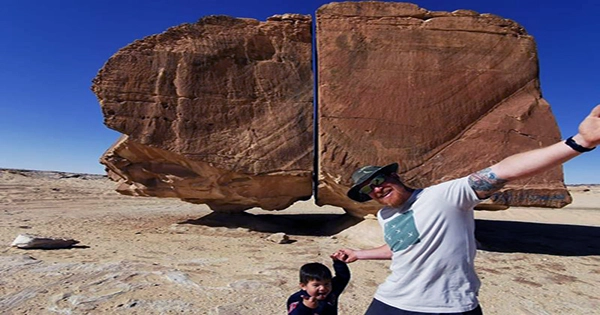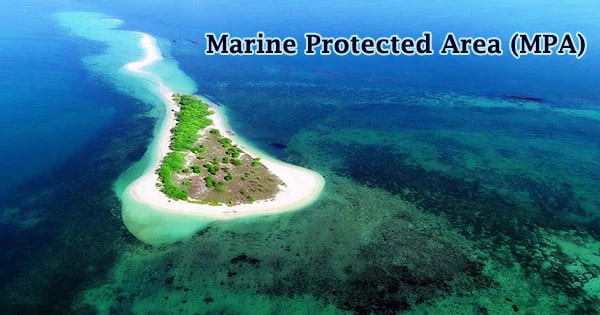The Al Naslaa Rock Formation, a massive, solid rock that appears to have been split in half by an alien’s laser weapon, is a superb example of how nature is a serious force to be reckoned with. Rather from being a narrative about alien shenanigans (as fantastic as that might be), the Al Naslaa Rock Formation is assumed to have been formed entirely on Earth. The 6-meter (20-foot) high boulders are supported by two natural pedestals, giving the impression that they are practically levitating in perfect harmony with one another since they do not lean towards their narrow division and touch.
It’s difficult to believe the Al Naslaa Rock Development formed by chance, although most scientific explanations rely on the natural weathering process as the cause of its enigmatic formation.
PETROGLYPH OF THE AL NASLAA ROCK FORMATION, The Al Naslaa Rock Formation, located in Saudi Arabia’s Tayma Oasis, is a petroglyph that is undoubtedly one of the most picturesque in the world. Petroglyphs are pictures carved or engraved into a rock’s surface (as opposed to pictographs, painted onto rocks). On the surface of the Al Naslaa Rock Formation, there are depictions of Arabian horses, ibexes, and people. The exact date the sculptures were carved into the stone is unknown, however the sandstone rocks are thought to be thousands of years old.
WHERE DID AL NASLAA’S ROCK FORMATION COME FROM? The precise split through the middle of the Al Naslaa Rock Formation has sparked various ideas. One theory is that the boulder is situated on a fault line, and the split was caused by the earth beneath it shifting, forcing it to split in half at a weak place. The fissure generated by this action may have turned into a wind tunnel, allowing sand-laden gusts to sweep across the landscape. Thousands of years of grains passing through the gap may have effectively sanded down the uneven fracture to create a completely smooth surface.
It’s also possible that the crack is a joint, which is defined as a natural break in a rock that occurs without displacement in geology. The fracture separates the rocks and, as shown in the Al Naslaa Rock Formation, can be remarkably straight. Another possibility is that the fracture was produced by freeze-thaw weathering when water entered into a tiny gap in the then-connected sandstone rocks in ancient times. This water may have then frozen, expanding and exaggerating the fissure. The divided ice would have thawed and melted when the chilly period ended, leaving a perfectly straight space between the sandstone boulders.
The pedestals on which the split rocks rest are fairly prevalent in desert environments, where they’re also known as mushroom rocks due to their form. They’re generally the consequence of weathering, which might be caused by higher-speed winds that wear away the rock faster, or glacial activity, in which a boulder moves to balance atop another due to sluggish glacial movement.
WOULD THE AL NASLAA ROCK FORMATION HAVE BEEN CREATED BY HUMANS? Because the Al Naslaa Rock Formation is composed of sandstone, it is susceptible to weathering as well as human intervention. Simple metal tools may have sheared the rock down the middle, but what could have possessed a person to undertake such a difficult feat as slicing a boulder in half? It’s conceivable that the strange rock sculpture was made as a geographical landmark, a sacred location, or an early example of art by ancient civilizations. The petroglyphs on its surface serve as a reminder that not everything we do as humans is for no other reason than to express ourselves.
CAN YOU TELL ME WHERE I CAN FIND THE AL NASLAA ROCK FORMATION? If you’d want to try your hand at unraveling the Al Naslaa Rock Formation’s riddle once and for all, you can find it in Saudi Arabia’s Tayma Oasis, not far from the Al Knanafah Wildlife Sanctuary. Oh, and if you do figure it out, please let us know, okay?
















